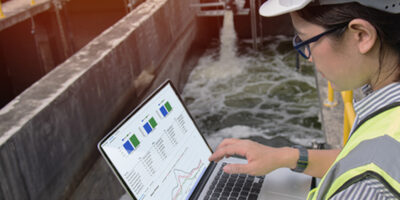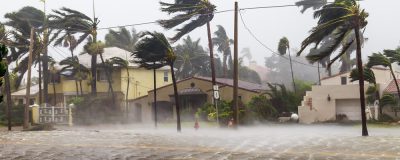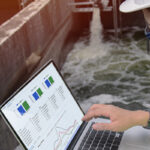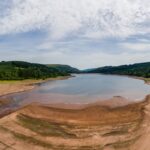Many would assume that water quality is best in the storage tank or near the tank. While that is often the case, there are exceptions where this might be the opposite.
Purpose of a water tower tank
Most utilities use some type of ground or elevated storage system to process water during times when treatment facilities or direct pumping are idle. These storage systems are called water towers.
Water towers are able to supply water even during power outages, because they rely on hydrostatic pressure produced by elevation of water to push the water forward by gravity water distribution systems. However, they cannot supply the water for a prolonged period without power, because a pump is typically required to refill the tower.
A water tower also serves as a reservoir to help with water needs during peak usage times. The water level in the tower typically falls during the peak usage hours of the day, and then a pump fills it back up during the night.
The lower the water age, the better the water quality
Field studies have shown that storage facilities could have a significant impact on water quality in a distribution system (Clarks, Grayman, 1998) and that hydraulic modelling is recommended in assessing the current conditions, evaluating location of the storage facilities and supporting design of future systems. Because chlorine reacts with the natural organic matter in water, water age is a key factor in the deterioration of water quality. With age, chlorine residuals will decrease, and disinfection by-product concertation will increase. Therefore, water age serves as a good indicator of water quality.
When you simulate water age through hydraulic modelling, you can:
- understand average water age within the distribution system
- highlight pipes with stagnant water
- identify low circulation areas
These water age simulations can be done without too much of effort on any hydraulic model that can run in extended period mode.
Incidences of increased water age near water towers
In which situations are we likely to find increased water age near water towers? This example highlights a situation where the water tower is situated near the water treatment plant pump station. In instances where the pump station is operated 24/7, the water level in the storage tank might not change much, especially if the pressure fluctuations with the water distribution system are low. In cases where variable speed drive pumps are set to maintain downstream pressure, water level oscillations in the storage tank will be even more insignificant. As a result, the water age in the water tower will increase and severely influence the water quality in the neighbourhood pipes.
The illustration here is from a water distribution system with two water treatment plants, pump stations and a water tower. The computer simulations showed increased water age near the water tower and recommendations for water quality sampling near the water tower were provided.
OpenStreetMap image of a water tower neighbourhood with water distribution system and water age results. Pipes are colour coded by the water age. Open Street Map ©2019. Used with permission.
A similar situation was found in other distribution systems similar to this one and the water utility conducted water quality sampling in the vicinity of the storage tanks. The water quality sampling showed very low concentrations of residual chlorine 0.06 mg/l, which is practically on the lower end of the EU regulation 98/83ES (376/2000Sb) 0.05 mg/l at the tap. This came as a bit of a surprise to the water utility and was regarded as a very positive outcome from hydraulic modelling.
Curious to learn more?
Find out how you radically change the way you manage your daily water network operations. Read about the WaterNet Advisor.
[1] Robert M. Clarks, Walter M. Grayman, Modeling Water Quality in Drinking Water Distribution Systems. AWWA, 1998.
About the authors

Petr Ingeduld
Senior project manager and hydraulic engineer, DHI Czech Republic
Petr is a water supply systems expert at DHI with over 20 years of professional experience. Throughout his career, Petr has focused on the development and application of hydraulic models to support water supply and distribution. He has managed numerous global projects and provided technical direction and troubleshooting on various modelling efforts.

Erzsebet Lenke Piesko
Hydraulic engineer, DHI Hungary
Erzsebet is an urban water expert at DHI with years of professional experience in modelling and consulting on both water supply and collection systems. Erzsebet has been working on hydraulic and hydrological models for almost 10 years. Apart from consulting, Erzsebet frequently shares her expertise through training courses and workshops.









